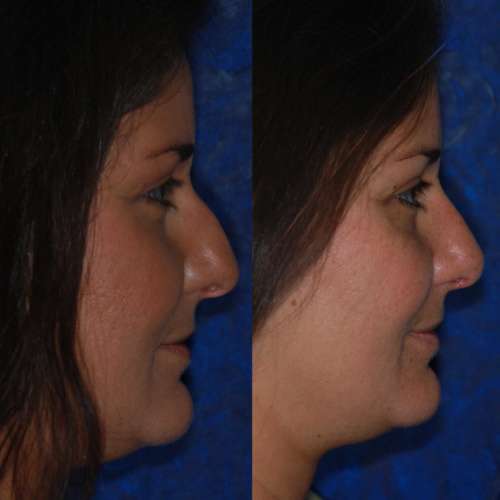
Rhinoplasty
(Nasal Reshaping) Surgery
Dr. Verret performs rhinoplasty in order to reshape the nose. Appearance can be improved for those people who are dissatisfied with the shape and size of their nose. Nasal reconstruction was one of the first cosmetic procedures ever developed and is among those most frequently performed today. In Dr. Verret’s practice in Plano, rhinoplasty is a surgical procedure in which deformities of the nose are corrected by removing, rearranging or reshaping bone or cartilage.
Reasons for Rhinoplasty Surgery
Reasons for rhinoplasty include reducing the size of the nose, removal of bumps as well as improving the angle of a nose. Conditions may be natural or due to external trauma to the face. This operation can also help patients who have difficulty breathing. Rhinoplasty surgery can be performed on all age groups, including teens and the elderly.
Before Rhinoplasty Surgery
A medical history along with a careful examination is conducted in order to evaluate your general health. We will discuss with you the way your nose can look in relation to your other facial features. Digital photographs and computer imaging allow Dr. Verret to evaluate the appropriate procedure to achieve the desired results. Pre-operative instructions may include the elimination of certain drugs that contain aspirin or aspirin like compounds in order to minimize the possibility of excess bleeding. Antibiotics may be prescribed before surgery to prevent infection.
When considering a surgeon to perform rhinoplasty surgery, it is imperative to pick a surgeon who understands the function as well as the look of the nose. With his extensive background in head and neck surgery, Dr. Verret has not only studied but also written papers on proper nasal function. It would be a disaster to undergo surgery that creates a beautiful nose but not be able to breath out of it.
Method of Rhinoplasty Surgery
In most cases involving a reduction in shape or size of the nose, angle or removal of a hump, the skin of the nose is separated from the underlying skeleton of bone and cartilage. The bone and cartilage are then reshaped and the skin re-draped over the surface. Patients who have a deviated septum may benefit by correction of this problem. The incisions are placed inside the nose, unless Dr. Verret uses an open approach, in which case the incisions are made across the tissue between the nostrils. In cases where the nostrils flare, an incision may be made at the junction between the nose and the skin of the upper lip to narrow the flared appearance. It is not unusual to combine rhinoplasty with chin augmentation to improve the profile.
After Rhinoplasty Information
The recovery after rhinoplasty surgery takes one to two weeks. Most people resume their normal activities within a week or two. Following surgery, a lightweight splint is applied to maintain the new shape of the nose. The splint is removed within a week. Nasal splints may be inserted at the time of rhinoplasty surgery to protect the septum. These are removed within a week. There is always some stuffiness of the nose, especially when work has been done on the nasal septum. Pain is minimal and is controlled with medications after surgery. Bruising occurs around the eyes, but begins to fade within a few days. Discoloration usually disappears in two weeks after rhinoplasty surgery.
Your insurance company may pay for all or part of the costs associated with your rhinoplasty surgery if it is performed as a result of nasal obstruction. It is recommended that you check with your carrier to determine if there is coverage.

